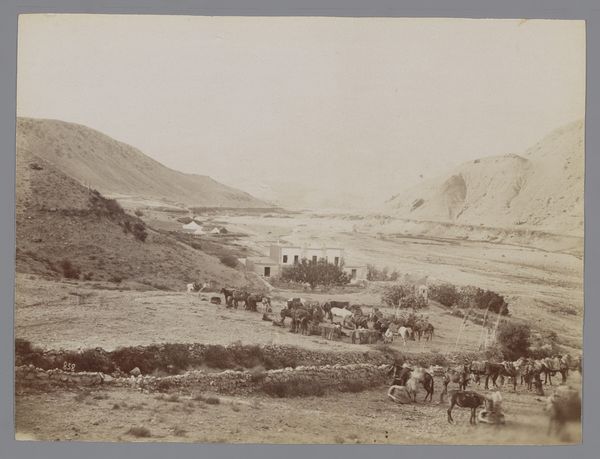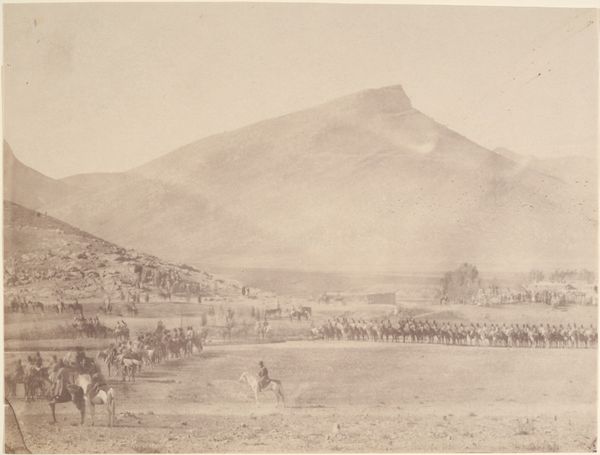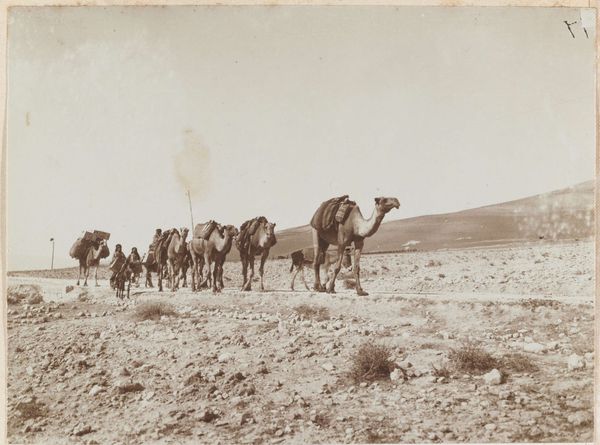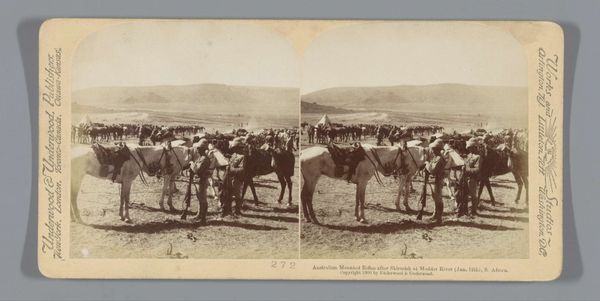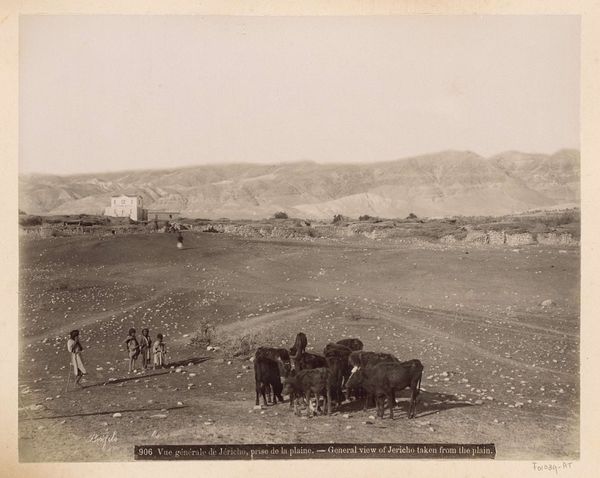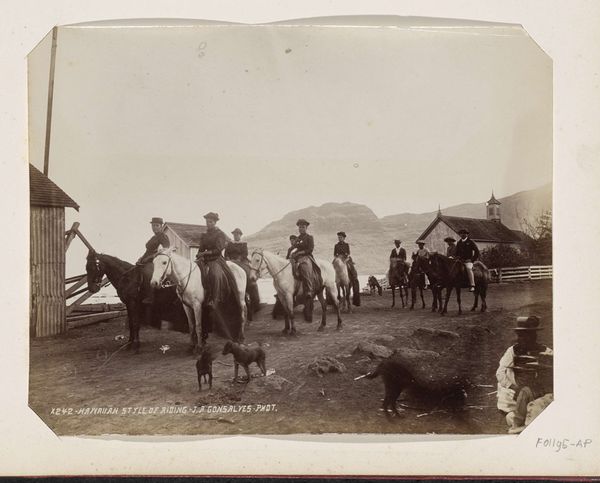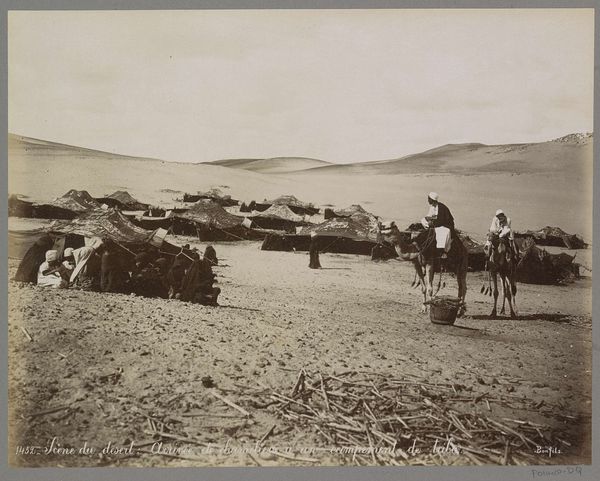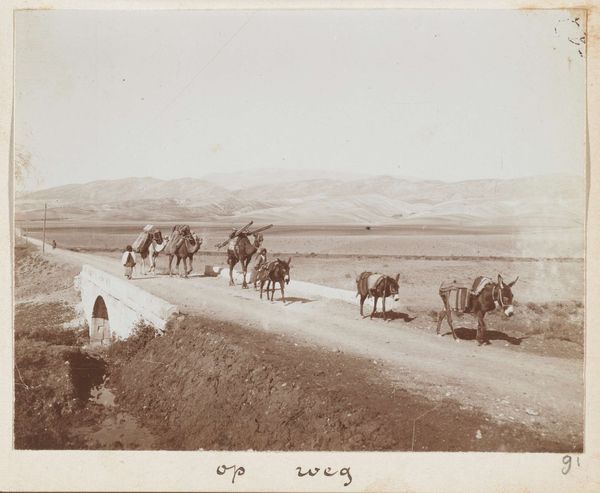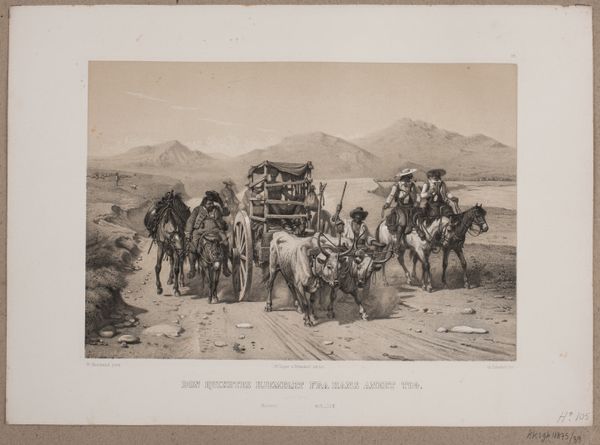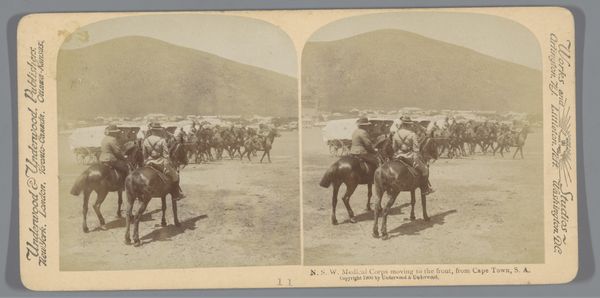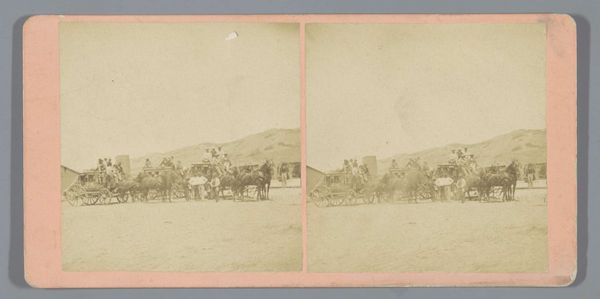
Britse legereenheid van veldmaarschalk Frederick Sleigh Roberts te paard nabij een militair kamp tijdens de Tweede Brits-Afghaanse Oorlog 1878 - 1880
0:00
0:00
photography, gelatin-silver-print
#
16_19th-century
#
landscape
#
photography
#
orientalism
#
gelatin-silver-print
#
history-painting
Dimensions: height 196 mm, width 313 mm
Copyright: Rijks Museum: Open Domain
Editor: This photograph by John Burke, a gelatin-silver print from between 1878 and 1880, is titled "British Military Unit of Field Marshal Frederick Sleigh Roberts on Horseback near a Military Camp during the Second Anglo-Afghan War." The seemingly endless, flat field really dominates the composition. It creates a very staged effect; the scene almost feels theatrical. What historical narratives are embedded in an image like this? Curator: Indeed. This photograph offers us a window into the public image the British sought to project during the Second Anglo-Afghan War. Consider the very act of photographing this scene: a calculated display of power and control in a landscape ripe with colonial tension. Who do you think was the intended audience? Editor: Presumably, this was created to be viewed back in Britain? To create this impression of British dominance and military might? Curator: Exactly. This photograph would have circulated in Britain, reinforcing a particular narrative about the Empire's strength and its 'civilizing' mission. Look closely at the arrangement of the figures; it mimics a formal portrait. What message do you think this sends? Editor: That it is not just any army, but a professional force, structured and disciplined, led by figures such as Roberts. And even that the 'Orientalist' feel could almost glorify such control. Curator: Precisely! Furthermore, the photo also tells us about the relatively new technology of photography itself being wielded as a tool of colonial representation. How the very act of capturing an image is also a way of capturing a people and place in the service of imperial ideology. Editor: This makes me look at it completely differently! It’s less about the individuals in the photo, and more about the political machine behind it. Curator: Indeed, understanding the historical context allows us to unravel the layers of meaning and power embedded within this seemingly straightforward depiction of a military scene. Editor: Thank you, I feel that gives me much more understanding of this piece now and how it can be interpreted in different ways.
Comments
No comments
Be the first to comment and join the conversation on the ultimate creative platform.
